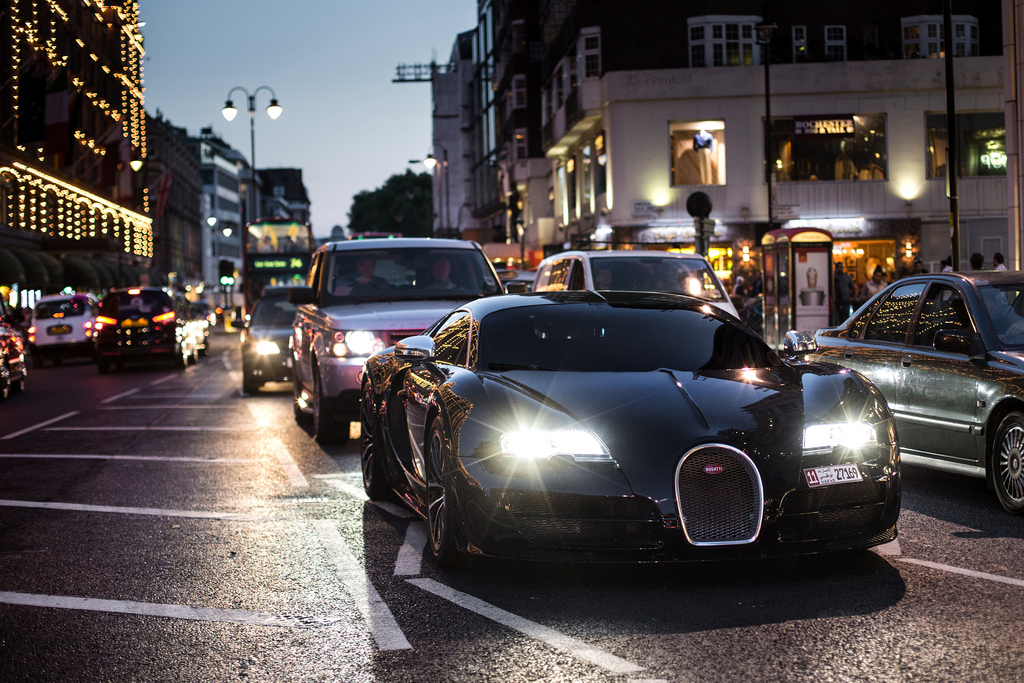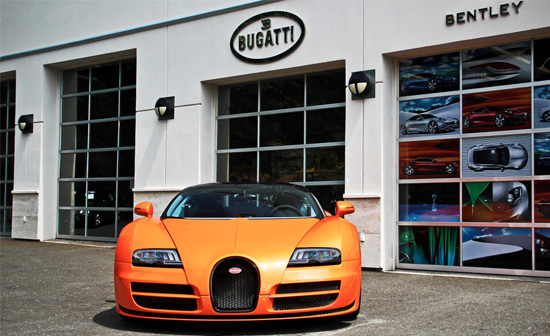At this point what more can be said about the genius behind the series of Bugatti Veyron? Yes, at top speed it goes through as much air as you do in 4 days. We know the fuel pump can flow 8 times that of the average car and will empty the 26 gallon tank after just 50 miles at full tilt. Yes, it has 11 radiators. And of course there is the phenomenal standard 1001 horsepower. Yes, it can travel well over 250+ mph. Impressive figures to be sure, but there are even more staggering numbers behind those figures.
The W16 quad turbo engine actually produces closer to 3000HP. Why the difference? When flat out, it generates almost 2000HP of waste energy that is lost in the form of heat. The air expelled from the original test car was so hot, that when it met the cooler ambient air, it reignited; requiring the use of Titanium for the exhaust and cooling the engine itself to help eliminate some of the temperature. Suddenly 11 radiators doesn’t seem excessive at all. But what you don’t know is that this almost multi-million dollar piece of mechanical marvel performs all the amazing feats its become famous for thanks to just two very important numbers.
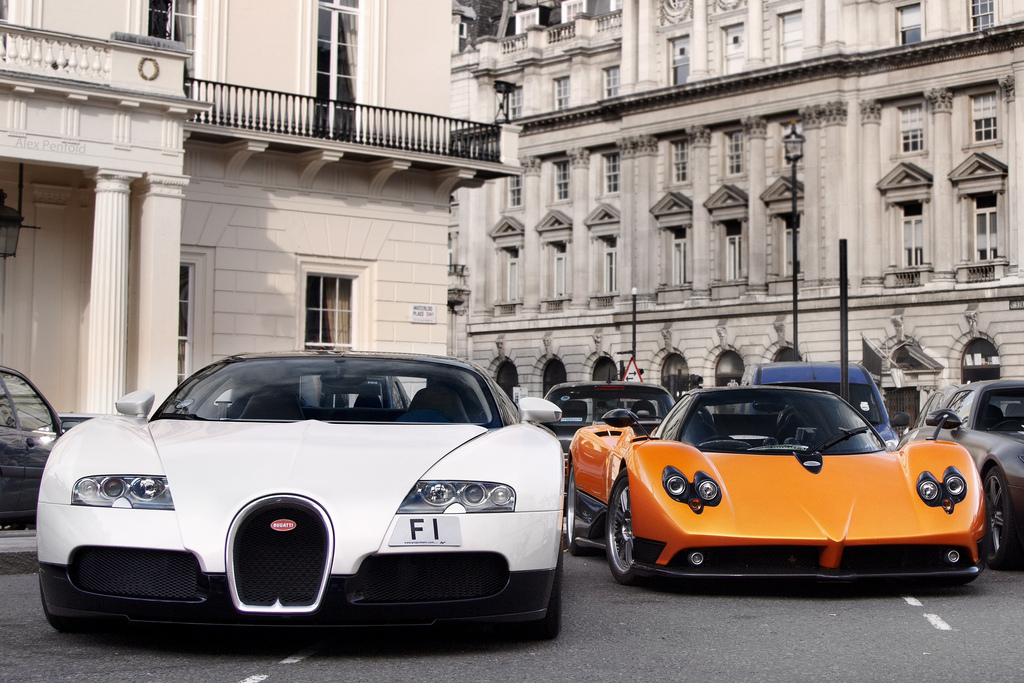
The Number 2
As you might imagine, it takes several hard working designers and engineers to bring something like the Veyron to life. The simple fact is this, out of the seventeen or so assembly personnel that bring all of the Veyrons components together, there are only ever two technicians that ever touch any one vehicle. It’s the only way to make sure that every nut and bolt gets the proper attention while the front and rear are attached to the monocoque cockpit. The front half is a fairly straight forward fit as it mainly supports suspension and electrical components. The rear half of the car is a totally different story.
As you might imagine, it takes several hard working designers and engineers to bring something like the Veyron to life. The simple fact is this, out of the seventeen or so assembly personnel that bring all of the Veyrons components together, there are only ever two technicians that ever touch any one vehicle. It’s the only way to make sure that every nut and bolt gets the proper attention while the front and rear are attached to the monocoque cockpit. The front half is a fairly straight forward fit as it mainly supports suspension and electrical components. The rear half of the car is a totally different story.
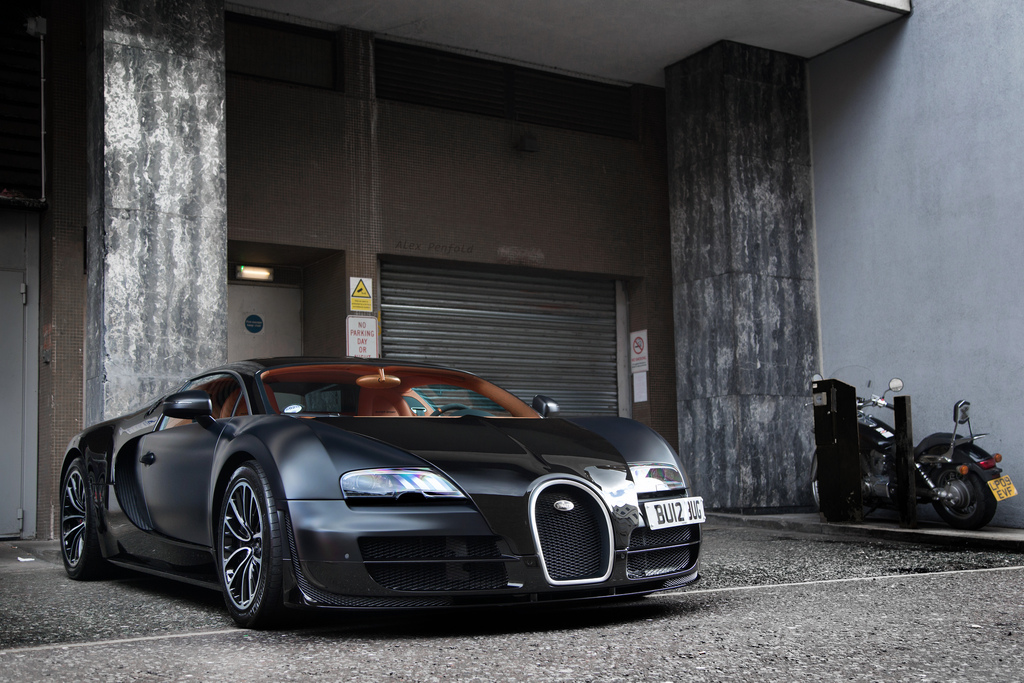
The Number 14
After having bolted the rear frame to the engine and transmission, the entire rear half is lined up and moved into place. Once everything is lined up and pulled together those two technicians join the two halves by way of just 14 Titanium bolts. It hardly seems possible that this, what is arguably one of the top three greatest cars of all time, owes its abilities to the strength of a few handfuls of bolts. Each costing just $100. Peanuts compared to every other cost associated with this car.
After having bolted the rear frame to the engine and transmission, the entire rear half is lined up and moved into place. Once everything is lined up and pulled together those two technicians join the two halves by way of just 14 Titanium bolts. It hardly seems possible that this, what is arguably one of the top three greatest cars of all time, owes its abilities to the strength of a few handfuls of bolts. Each costing just $100. Peanuts compared to every other cost associated with this car.
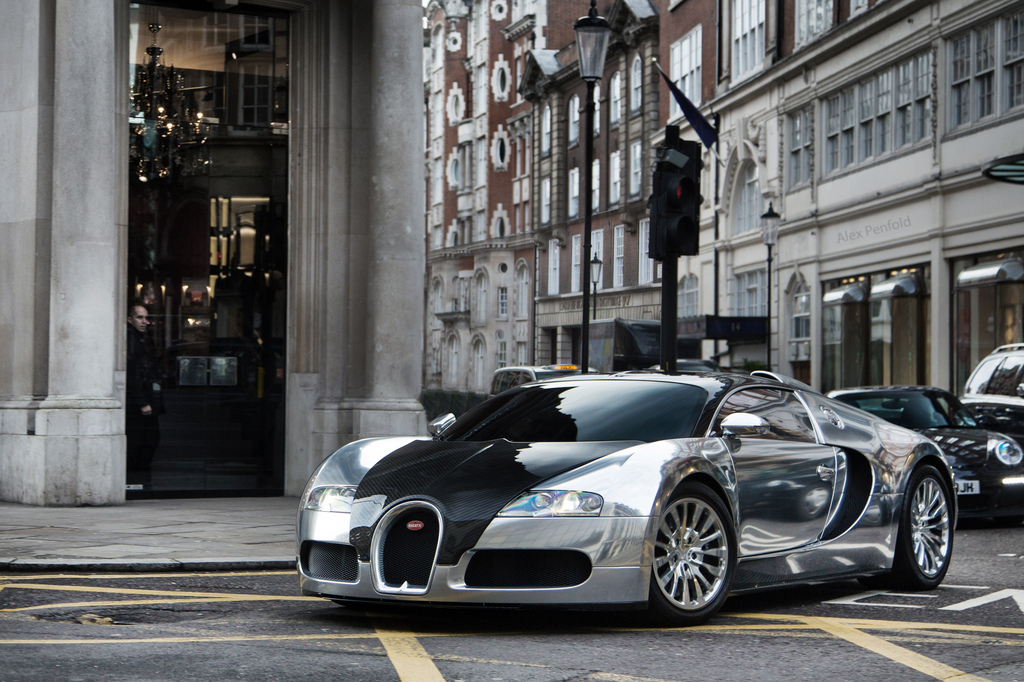
Some Ferrari models are avoided because the engine has to be removed to do a service. In the case of the Veyron, the entire rear half is removed for engine service. This has to be done annually to the tune of $21,000 which we told you about in the Bugatti Veyron Cost of Ownership article a while back. That article highlights the real cost you incur to experience the brute magnificence of the Veyron. What it’s like to drive one is a different story all together.
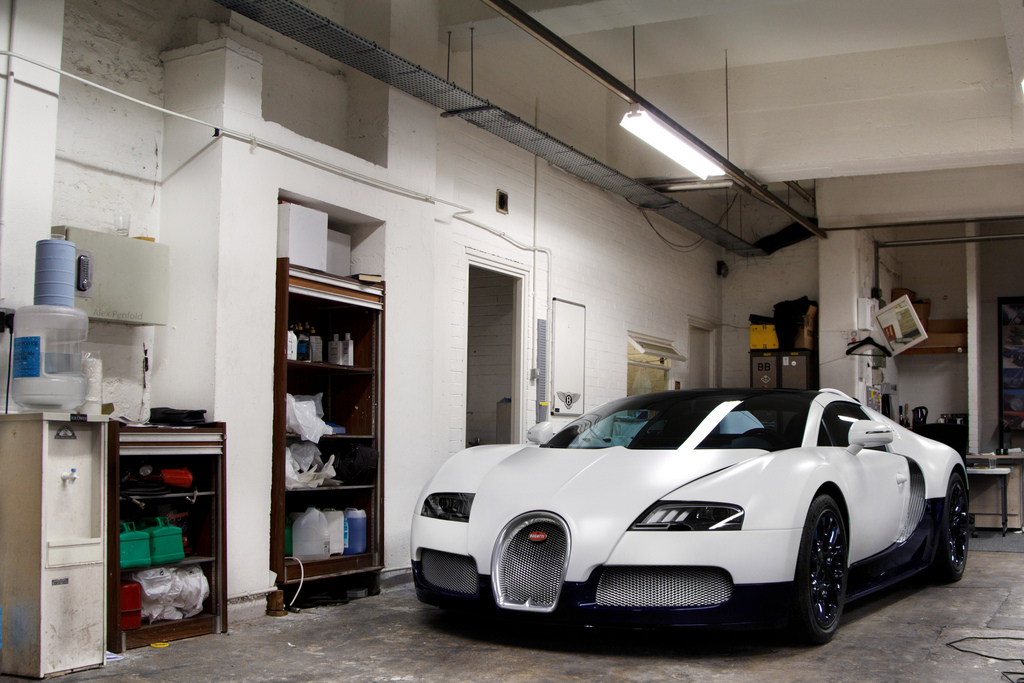
To get into drive you have to push the shifter to the Right once; twice for sport mode. To the Left you will find neutral. Left and Down gives you reverse. That will take a bit of getting used to if we may say so ourself. So whatever you do, don’t get all excited about driving it fast and anything crazy when shifting. One thing that wasn’t mentioned in that article the cost for a transmission replacement is around $123,000.
Photo credits: Alex Penfold
Photo credits: Alex Penfold
